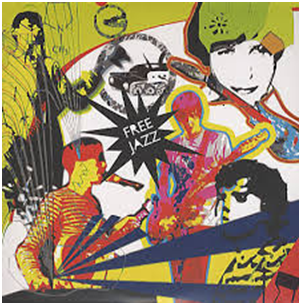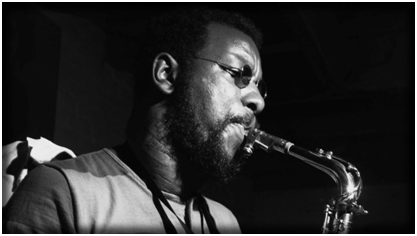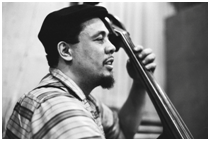
FREE JAZZ

Bebop and Cool Jazz in the 1940's and 1950's brought about groundbreaking develpments in jazz and paved the way for one of the biggest changes in the history of jazz. This change broke all of the rules jazz had been developed over the preceding 50 years and opened the door for an amazing time of musical experimentation. This new jazz movement was call, “Free Jazz,” and it became popular in the 1950's and 1960's. Free Jazz is also known as “Avant-Garde” music, which is a French term meaning new or unusual ideas. It is closely linked to the Civil Rights Movement and the racial tension that was prevalent during taht time period. As the world challenged pre-conceived stereotypes and laws that seemed unjust, the jazz world was challenging everything that was known about creating music in the jazz genre. Free Jazz musicians felt limited and restrained by the rules of music that centered around tempo, traditional scales, and chord progressions. They decided to create music that did not adhere to easily recognized tempo markings, pre-written chord changes, or melodies. They created a style that utilized strange sounds and strange instruments and normally did so in very small ensembles. An example of one of these new strange sounds was the development of overblowing, which is defined as utilizing the air blown in to the instrument in a way to get additional notes to develop over the main note.
Overblowing Example:
In addition to overblowing, jazz musicians spent a great deal of time improvising and focusing their compositions on the performer creating the music. Free Jazz musicians wanted to focus their music on the performance and specifically the new “sound” a performer could achieve during a performance rather than sitting down and writing out a composition that could be reproduced. The music created was often difficult to listen to and nearly impossible to tap your foot to, which created slow acceptance in popular culture. Jazz fans where not accustomed to hearing music that was typically atonal. Atonal music is music created without a center tone or pitch. Most of the music we listen to is based on tonal music or a musical “home base.”
Atonal Example:
While the general public was slow to accept Free Jazz, it did have followers and became very popular in West Coast Cities and on the East Coast where New York was the epicenter for jazz experimentation. While some people thought Free Jazz artists played music that didn’t make any sense, others viewed these ground breaking musicians as musical geniuses! One of the founding fathers of this new sound was Ornette Coleman.

Ornette Coleman
(1909-1959)
Ornette Coleman was a saxophonist who grew up playing in Swing bands and Bebop bands. He struggled in these settings with all of the musical restrictions and rules the jazz genre demanded. He began experimenting with different sounds and scales. He struggled to find other musicians who shared his progressive views. He eventually created his own band and found like-minded musicians who wanted to throw all the rules of music out the window! Ornette had a very unique saxophone sound, and in the early years, actually played a saxophone that was made of plastic and not metal. In 1959, he released the Album entitled, “The Shape of Jazz to Come,” which is often viewed as a turning point in jazz history, allowing for a time of great experimentation in jazz. While jazz listeners often criticized his unique sound and experimental music, Ornette continued creating music the rest of his life and is considered to be one of the great jazz innovators of his time!
Suggested Listening: Lonely Woman – Ornette Coleman
Ornette Coleman/Free Jazz Video:
Another great jazz innovator and leading Free Jazz artist was bassist Charles Mingus.

Charkes Mingus
(1920-2012)
Charles Mingus is considered to be one of the best bassists in the history of jazz. He began his professional career playing in a band led by Louis Armstrong and later performed in bands led by Charlie Parker, Bud Powell, and Miles Davis. He produced over 100 albums during his lifetime, all of which contained his view of Free Jazz and his passion for experimentation in music. Known as the “Angry Man of Jazz,” Charles was well-known for his temper on stage and toward anyone who did not share his vision of jazz. He is also known for composing the song Epitaph, which is one of the longest jazz pieces in history taking almost two hours to perform! In 2008, a performing group named the Mingus Big Band was created to continue to promote the works of Charles Mingus.
Suggested Listening: Flowers for a Lady – Charles Mingus
Charlie Mingus Mini Biography:
 |
| Unit 11 Free Jazz (Matching) Worksheet |
| Unit 11 Cornell Notes Worksheet |